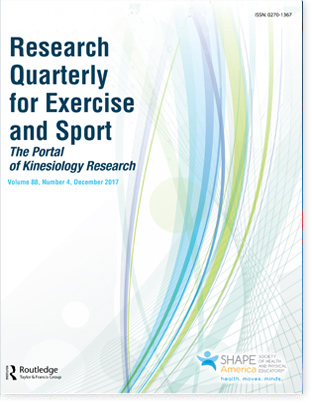 RQES Table of Contents
RQES Table of Contents
The Intersections of Science and Practice: Examples From FitnessGram® Programming
Gregory J. Welk
 An inherent goal of education, public health, and medical research is to promote adoption of evidence-based curricula, methods, and treatments in practice. Within medicine, researchers and clinicians receive the same basic training in medical school and share more of a common knowledge base. However, in community and public health settings, there is typically a bigger communication gap between researchers and practitioners. Recent recommendations have strongly endorsed notions of “science with practice” to help systematically advance public health (Galea & Annas, 2016), which has led to greater focus on external validity in research instead of solely on internal validity (Green & Glasgow, 2006; Mercer, DeVinney, Fine, Green, & Dougherty, 2007).
An inherent goal of education, public health, and medical research is to promote adoption of evidence-based curricula, methods, and treatments in practice. Within medicine, researchers and clinicians receive the same basic training in medical school and share more of a common knowledge base. However, in community and public health settings, there is typically a bigger communication gap between researchers and practitioners. Recent recommendations have strongly endorsed notions of “science with practice” to help systematically advance public health (Galea & Annas, 2016), which has led to greater focus on external validity in research instead of solely on internal validity (Green & Glasgow, 2006; Mercer, DeVinney, Fine, Green, & Dougherty, 2007).
Scientists generally aspire to have their work and ideas adopted and used in practice. We publish in scientific journals and share our recommendations in hopes that the ideas get adopted and used, but the reality is that evidence-based programming rarely gets disseminated, effectively implemented, and sustained in real-world community settings to impact health (Remington & Brownson, 2011). As an applied kinesiology/public health researcher, I have been both intrigued and frustrated by the inherent challenges in moving the needle on population health. In this article, I will share perspectives on the intersections of science and practice that I have experienced through my own professional (and research) experiences with the FitnessGram® program. I am incredibly honored to provide these comments in recognition of the legacy of C. H. McCloy, whose pioneering work clearly advanced both research and practice in physical education and exercise science.
To read the rest of this article,
click here to download a pdf.